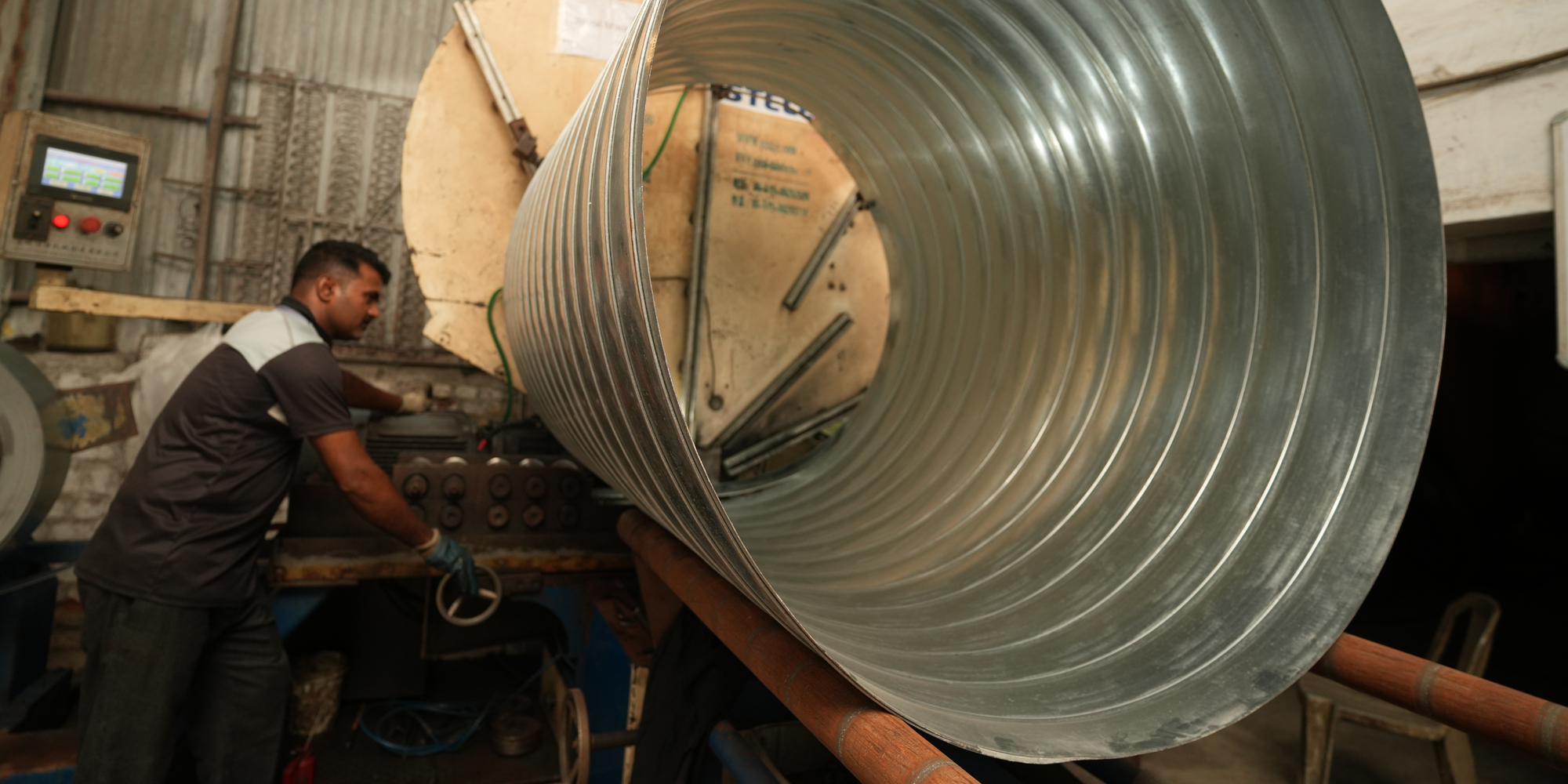Welcome to our company.
Opening Hours: Mon - Sat || 08:00 am
- 05:00 pm
|| Inspired by
![]()
![]()
Spiral & Flat Oval Duct Work
Energy Efficient

Ductwork leakage is always, and rightly, considered as the single biggest source of causing the maximum additional energy use in the built environment. Based on a survey of predominately rectangular duct systems, the annual cost of this energy waste runs into the cores of rupees. Design Engineers, code officials and building owners(users) are taking notice and questioning the use of ducted HVAC systems. There is a simple ducted solution, factory fabricated spiral/ flat oval duct, and fittings. It has long been recognized that spiral/ flat oval duct systems leak a great deal less than comparable rectangular systems.
This can be easily explained when looking at the source of leaks, seams, and connections. First, let’s consider the seam. Rectangular duct seams, such as a Pittsburgh Seam, require sealants for efficient sealing, either during production or at job site. Spiral seams, on the other hand, require no sealing and this is recognized by ASHRAE Standard 90.1. The testing shows leakage rates so low as to be inconsequential in case of spiral duct.
The second source of the leakage is the transverse connection. Rectangular duct joint comes at ever 4 feet interval in addition to fittings (elbows & tapers) as required to change size or direction. Spiral duct can be manufactured in lengths up to 12 feet long. Because of this length difference, and taking into consideration the number of fittings required, 30% or more of the transverse connections can be eliminated. Careful use of factory mounted branches on spiral duct can allow the elimination of almost 50% of field connections. In other words the use of spiral can eliminate the opportunity for leakage by almost half. Overall even SMACNA, whose members make large quantities of rectangular duct, admits that rectangular duct can be expected to leak at least twice as much as spiral round and flat oval duct. If the Pittsburgh seams aren’t sealed, you can expect rectangular duct to leak four times as much.
Easy to Install
Round and oval spiral duct systems are easier to install than traditional rectangular systems. This is because, the duct on average weighs less and is easier to handle but most importantly, there are fewer transverse connections. Spiral is readily available in cut-to-length pieces up to 12 feet long. Making 30% or more fewer connections is an easy way to achieve significant field labor savings.
Ease of Sealing
Round and flat oval spiral duct systems have four great sealing advantages. The first and most obvious is the spiral seam. It is the only duct seam short of a full weld that does not require sealing according to ASHRAE 90.1. The second advantage is that the perimeter of round and flat oval duct is less than rectangular so each joint that must be sealed is smaller. Third, there are fewer of these smaller joints. Finally there is the joint itself. Most rectangular duct leaks are at corners of transverse joint which are difficult to seal. On average you can easily expect to use one third of the sealer, and one third of the time to seal your round and flat oval sytems versus rectangular duct systems. Of course you can also install Eastern Tight or Eastern Flange systems and reduce the need to seal even more.
Aesthetically neat & superior
Spiral duct has an aesthetically neat & pleasing helical seam that can be seen in both large volumes spaces like manufacturing plants & retail stores, as well as more intimate settings such as office and restaurants. Exposed duct can be left unpainted or can easily be painted on the jobsite to match the colour scheme of your desire.
- Thickness:
0.50mm (26G) to 1.2mm (18G) thickness
- Diameter:
Unique any diameter manufacturing capability
- Length:
As per requirement
- Material:
Galvanized steel, Aluminum, Mild steel (CRCA), Stainless steel.
- Surface Construction:
Plain or corrugated (to increase the rigidity of the ducting)
- Manufacturing standards:
SMACNA, IS & DW.


